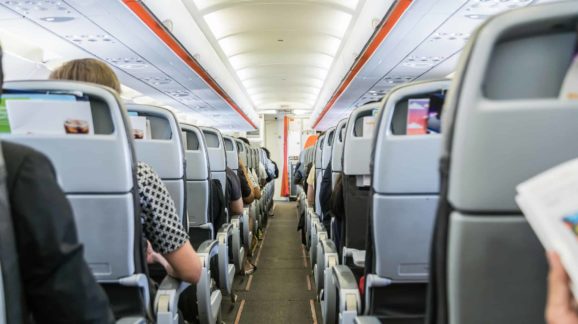Breathing Easier: End of the Mask Mandate?
There was almost an audible sigh of relief nationwide following Monday’s ruling by a federal district-court judge in Florida vacating the Centers for Disease Control and Prevention’s mask mandate for air travel and public transport. Carriers including every major airline, Amtrak, the Washington, D.C., Metro, Uber, and Lyft rushed to announce that passengers would no longer have to mask up. Passengers and flight crews celebrated mid-flight. Parents who had come to dread traveling with children who refused to keep their masks on finally relaxed. White House press secretary Jen Psaki called it a “disappointing decision” and urged travelers to continue wearing masks. But few others in the country agree, and initially, the president and the Justice Department, seemed disinclined to do anything about it.
Judge Kathryn Kimball Mizelle held that the CDC had exceeded its statutory authority, violated the notice-and-comment procedures required for rulemaking under the Administrative Procedures Act, and acted in an arbitrary and capricious manner in imposing the mask mandate. President Biden, though, did not seem terribly concerned. When asked on Tuesday whether the public should continue wear masks on airplanes, he responded, “That’s up to them.”
That same day, the Justice Department said it would appeal, but only if the CDC concluded in the coming weeks that a mandate remains necessary to protect public health. After another day of White House deliberations about the political and policy implications of fighting the court’s decision, the CDC announced on Wednesday evening that its “continuing assessment” was that “at this time an order requiring masking in the indoor transportation corridor remains necessary for the public health.” Shortly afterwards, the Justice Department filed a notice of appeal.
A telling feature of the Justice Department’s appellate filing is that it reportedly did not include a request to stay the district court’s order and reinstate the mask mandate pending the outcome of the appeal. This is highly unusual, especially in a case where public-health authorities claim that reinstating the mandate is “necessary for the public health.” It strongly suggests the CDC is more concerned with preserving its prerogatives for the future than in protecting the public from a current health emergency — a motive that was confirmed by Jen Psaki in a Wednesday night interview where she said the appeal was important “to ensure the CDC’s authority and ability to put in mandates in the future remains intact.”
Congress could, of course, enact a new statute that unequivocally gives the CDC the power to impose a mask mandate in certain conditions. Judge Mizelle’s point was that the current statute does not provide the CDC with such authority. But, as in many other areas, the Biden administration wants to bypass the hard work of legislation and rule by administrative fiat.
The administration would like to vindicate a policy that is closely associated in the public mind with the president. Candidate Biden had promised that he would impose a transportation mask mandate if elected after the Trump administration refused to do so. One day after his inauguration, President Biden issued an executive order directing executive-branch agency heads to require masks, in compliance with CDC guidelines, on airplanes, trains, intercity buses, and other forms of public transportation and at transportation hubs such as airports and train stations. The CDC issued those guidelines two weeks later and has renewed them multiple times since.
The mandate had been set to expire on April 18 — the same day as the court’s ruling — but was extended by the CDC on April 13 until May 3. Citing a small rise in the seven-day moving average of Covid cases over the preceding two weeks, the agency claimed that it needed more time to study “the potential impact of the rise of cases on severe disease, including hospitalizations and deaths, and healthcare system capacity.” But hospitalizations and deaths had not budged upwards in the weeks preceding the mandate extension or since and most state and local governments and businesses nationwide had dropped their mask mandates. Even some hospitals had begun to relax mandates for visitors and some patients.
Simply put, the significance of increasing cases has changed. There may be increased cases of highly transmissible Omicron variants but a much smaller percentage of them go on to severe illness. New therapeutics are now available that did not exist when the mandate was first imposed and most of the population now has some level of vaccine or natural immunity.
Just two months ago, the CDC changed its indoor-masking guideline, only recommending mask in high-risk counties — those with high numbers of new cases and also high numbers of new Covid hospitalizations, and a high percentage of hospital beds occupied by Covid patients. On April 13, the same day the CDC extended the travel mandate, only 0.4 percent of U.S. counties were in the high-risk category. Nevertheless, the agency extended the travel mask mandate anyway.
Not surprisingly, the U.S. public has lost faith in the pronouncements of the CDC and other administration experts. Prior to the pandemic, roughly two-thirds of Americans had a positive view of the CDC. In a recent poll, though, only 44 percent of Americans said that they trust what the agency says about Covid, down from 55 percent in August 2020. Dr. Anthony Fauci has fared even worse: only 40 percent trust his Covid pronouncements compared with 51 percent in August 2020.
Read the full article at National Review.
